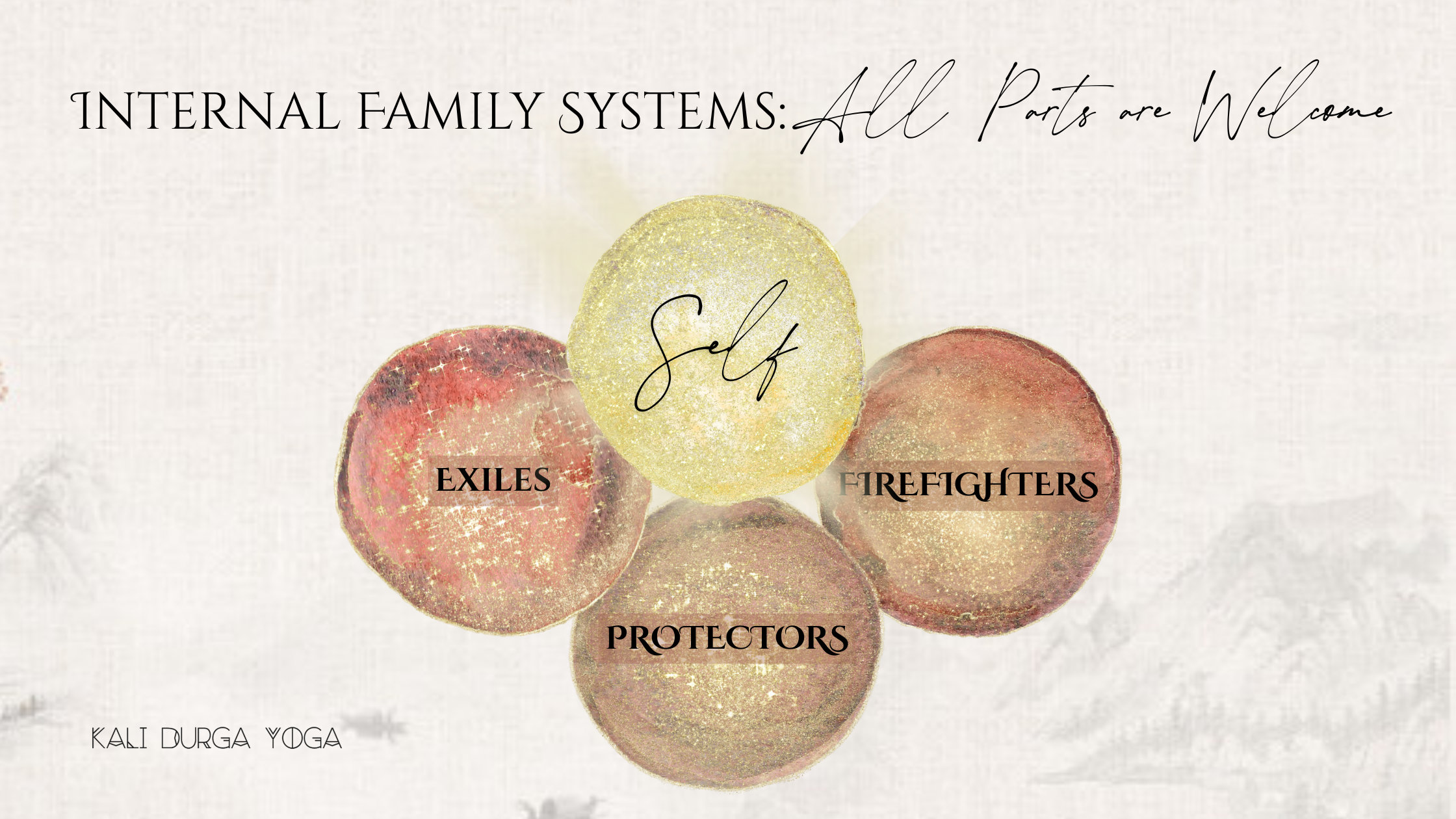Internal Family Systems & Yoga: A Bridge Between Inner Parts and Embodied Practice
In the quiet space of the yoga mat, something profound unfolds: the opportunity to meet ourselves, fully and compassionately. Beyond the stretch of fascia or the shape of an asana, yoga opens a gateway inward—toward the terrain of the psyche, the nervous system, and the multiplicity of parts that make up our inner world. This is where Internal Family Systems therapy (IFS) and yoga intertwine: both are practices of turning toward what arises, holding it with warmth, and cultivating deeper integration.
What is Internal Family Systems Therapy?
IFS, developed by Richard Schwartz, invites us to recognize that we are not a singular, monolithic “self.” Rather, we are made up of many inner parts—protectors, exiles, managers—each carrying a unique role and burden. Central to IFS is the concept of Self-energy: an inherent, compassionate core within us, characterized by calm, curiosity, clarity, and confidence.
Through IFS, we learn to meet our inner parts not with judgment or suppression, but with listening and care, allowing even the most defensive or wounded aspects of ourselves to be witnessed and eventually unburdened.
Where Yoga Meets Parts Work
Yoga, especially embodied practices like yin yoga and restorative yoga, becomes a powerful companion to IFS. In stillness, sensation, and breath, we create the conditions for parts to emerge. Every time we pause in a deep forward fold or rest in supported bridge pose, we might encounter subtle voices inside: an anxious part, a striving part, a protective part guarding an old wound.
Rather than overriding these sensations, we can bring mindful awareness to them—mapping our inner landscape somatically. As we breathe into the hips, notice a tightening in the chest, or feel a flutter in the belly, we’re not just stretching muscles; we’re dialoguing with our system.
Yoga helps us stay anchored in the body while accessing Self-energy. That moment of soft gaze in child’s pose, or the surrender of savasana, becomes a portal into the compassionate witness inside.
A Somatic Practice: Meeting a Protector
Here’s a simple way to weave IFS and yoga together:
Come into a supported child’s pose—place a bolster or pillow under your chest, arms resting forward.
Close your eyes and follow the rhythm of your breath.
Silently ask inside:
“Is there a part of me that wants my attention right now?”
Notice if any sensations, images, or feelings arise. Perhaps it’s a tightness in the throat, a guarding in the belly.
Gently ask this sensation or part:
“What do you need from me in this moment?”
Stay in compassionate presence. There’s no need to fix or change anything. Simply hold space.
Over time, this embodied inquiry builds trust within the internal system, allowing protectors to soften and deeper layers to emerge.
Yoga as a Path of Integration
Both IFS and yoga honor the non-linear, layered nature of healing. We don’t force parts to move or emotions to release; we create safe conditions for integration to unfold. The mat becomes a meeting place where mind, body, and soul are reunited—a return to wholeness through compassionate witnessing.
As you explore this intersection of yoga and IFS, may you discover a gentler relationship with yourself, and the profound wisdom that arises when you welcome all parts home.
Interested in learning more?
Join me for my upcoming IFS Circle, a guided journey blending Internal Family Systems, yoga, meditation, and somatic practices.

